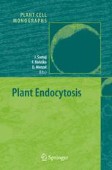Search
Search Results
-
Environmental Design Considerationsfor Somatic Embryogenesis
In addition to the biomolecular, physiological, and biochemical aspects of somatic embryogenesis, careful design of environmental conditions is...
-
Origin, Development and Structure of Somatic Embryosin Selected Bulbous Ornamentals: BAP as Inducer
Somatic embryogenesis in three important ornamentals is discussed in this chapter. Direct somatic embryo development on the explant tissues...
-
MDR/PGP Auxin Transport Proteins and Endocytic Cycling
Auxin is an essential regulator of plant growth and development. Polarized transport of auxin is responsible for apical dominance, tropic growth,...
-
Somatic Embryogenesis in Genera Medicago: an Overview
This chapter outlines the details of somatic embryogenesis in genera Medicago. Various factors that influence the process of somatic embryo...
-
Somatic Embryogenesis of Pine Species: From Functional Genomics to Plantation Forestry
Several economically important tree species belong to the genus Pinus and many of them form the ecological base of forest ecosystems. Pine wood is...
-
Screening and Analysis of Pollen Tube Mutations
Although the cytology of the cellular aspects of male gametophytic development has been very well described for several species, molecular...
-
Transcriptome analysis in abiotic stress conditions in higher plants
Drought, high salinity, and low temperature are major environmental factors that limit plant productivity. Plants respond and adapt to these stresses...
-
Signal transduction in plant cold acclimation
Temperate plants respond to low temperature by activating a cold acclimation program leading to enhanced tolerance to freezing temperatures. This...
-
Plant salt tolerance
Soil salinity adversely affects crop productivity and quality. The success of breeding programs aimed at salinity tolerant crop varieties is limited...
-
Plant responses to heat stress
The heat stress response is characterized by inhibition of normal transcription and translation, higher expression of heat shock proteins (hsps) and...
-
The Material-Independent Signatures of Life.Forensic Tools of Astrobiology
Biological life is intimately related to the geochemical conditions on Earth and is fit for this planet’s energy flux. It has often been suggested...
-
The Early History of Bioenergy
Energy is most commonly defined as the potential to do work. The maintenance of the living state requires a constant flow of energy through the...
-
Assembling the Early Puzzle of Life
So far no theory, no approach, no set of formulas, and no blackboard scheme have been found satisfactory in explaining the origin of life. The...
-
Sensors of abiotic stress in Synechocystis
Systematic mutagenesis of histidine kinases in combination with DNA microarray technology has allowed us to identify sensors for cold, hyperosmotic...
-
Abscisic acid signalling
Signalling of abscisic acid (ABA) in plants is characterized by an amazing number of secondary messengers that are part of the pathway or modulate...
-
The Early History of Bio-Information
In a general sense, the information level of a structure equals the minimum number of instructions needed to specify the structure (Orgel 1973). The...
-
Higher Harmonic Generation Microscopy
Higher harmonic-generation, including second harmonic generation and third harmonic generation, leaves no energy deposition to the interacted matters...
-
Biological Markers for Anoxia in the Photic Zone of the Water Column
In this chapter we review the current state of knowledge on the occurrence of anoxic conditions in the water column of past depositional systems...
-
Controls on the Carbon Isotopic Compositions of Lipids in Marine Environments
Organic carbon isotopes have long been used to study modern and ancient biogeochemical processes. Controls on the isotopic composition of organic...
-
Sterol Endocytosis and Trafficking in Plant Cells
Structural sterols are integral components of biological membranes. They regulate membrane permeability and fluidity, and they influence the...
